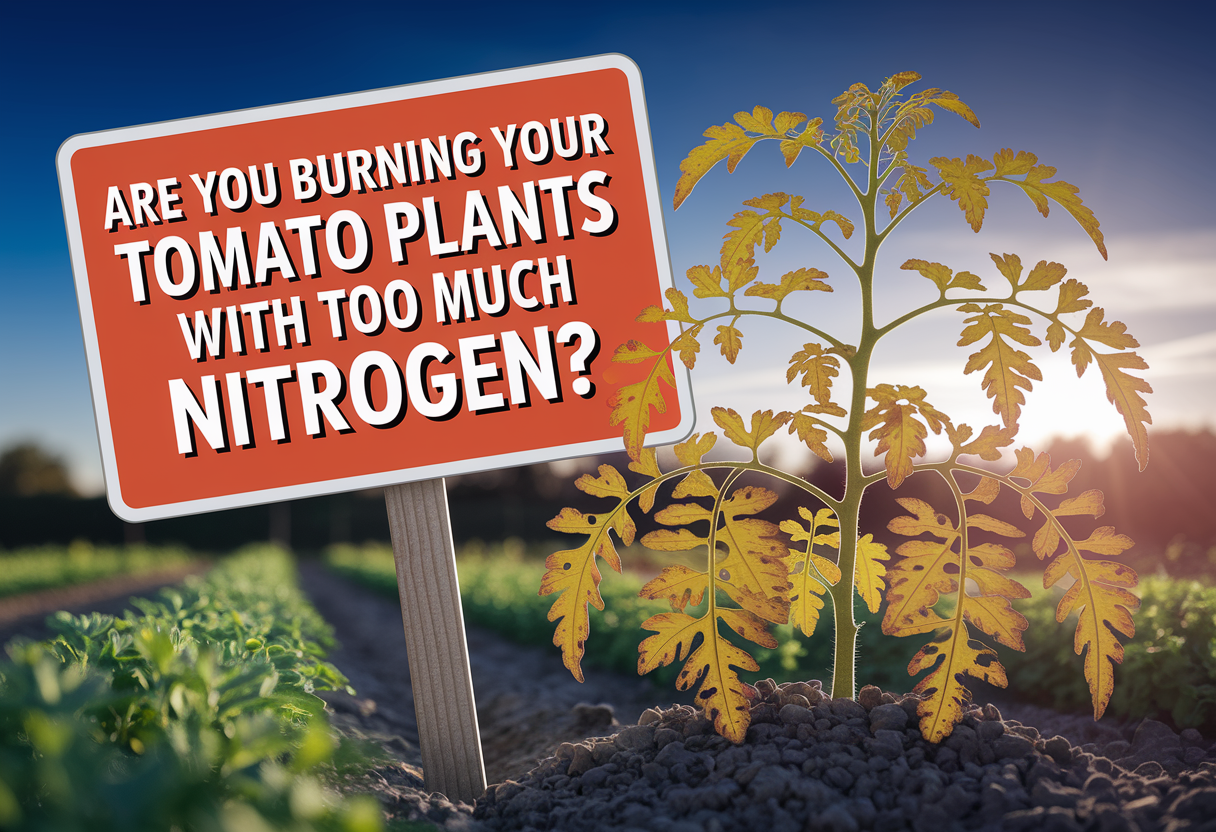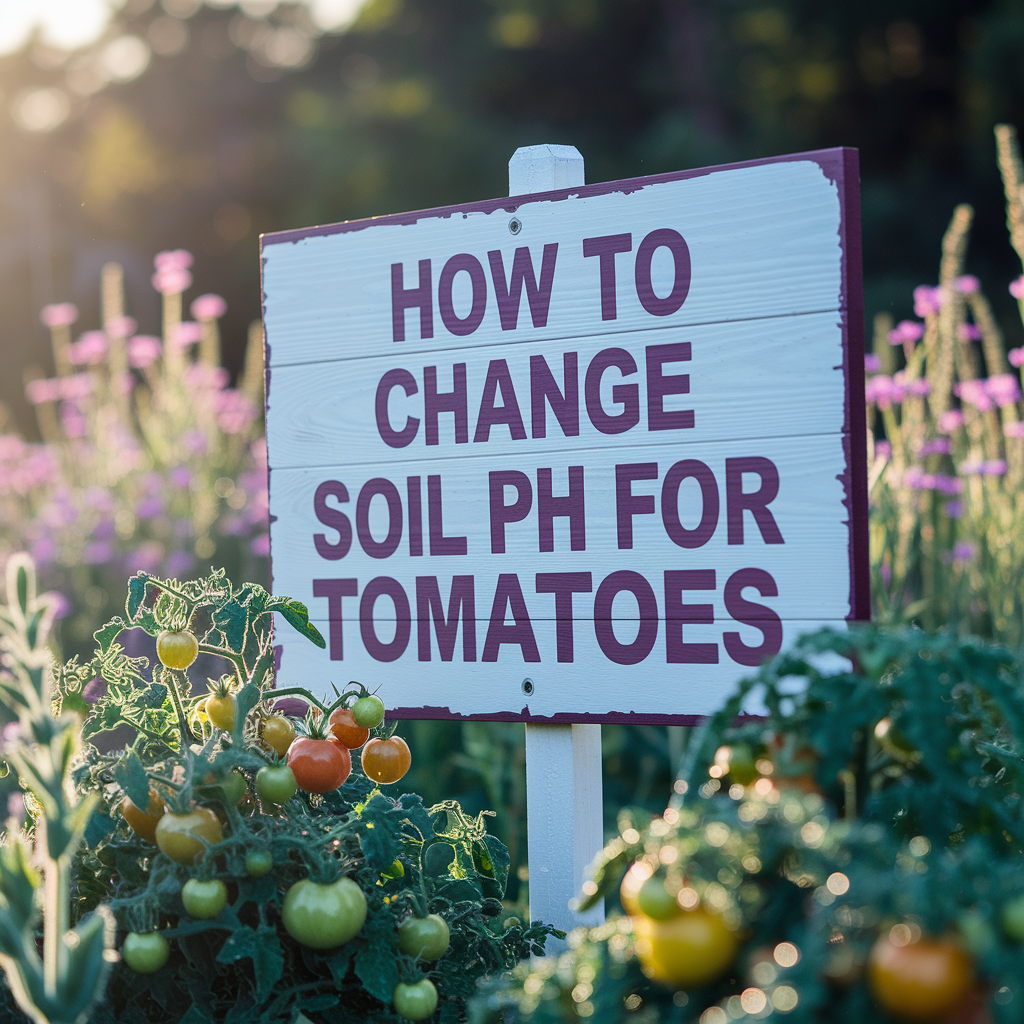
The Problem with pH and Tomatoes
When I first started growing tomatoes, I didn’t give soil pH a second thought. I figured if the plants had sun and water, they’d take care of themselves. But I kept running into the same frustrating issues — yellow leaves, poor fruit growth, and weak stems. After some digging (literally), I realized the real problem wasn’t my watering schedule or the fertilizer I was using. It was my soil’s pH.
Tomato plants are picky about pH, and once it’s out of balance, they struggle to absorb the nutrients they need — even if those nutrients are present in the soil. It’s like having a fridge full of food but no key to open it. If your tomato plants are struggling and nothing else seems to explain it, checking your pH is one of the smartest moves you can make.
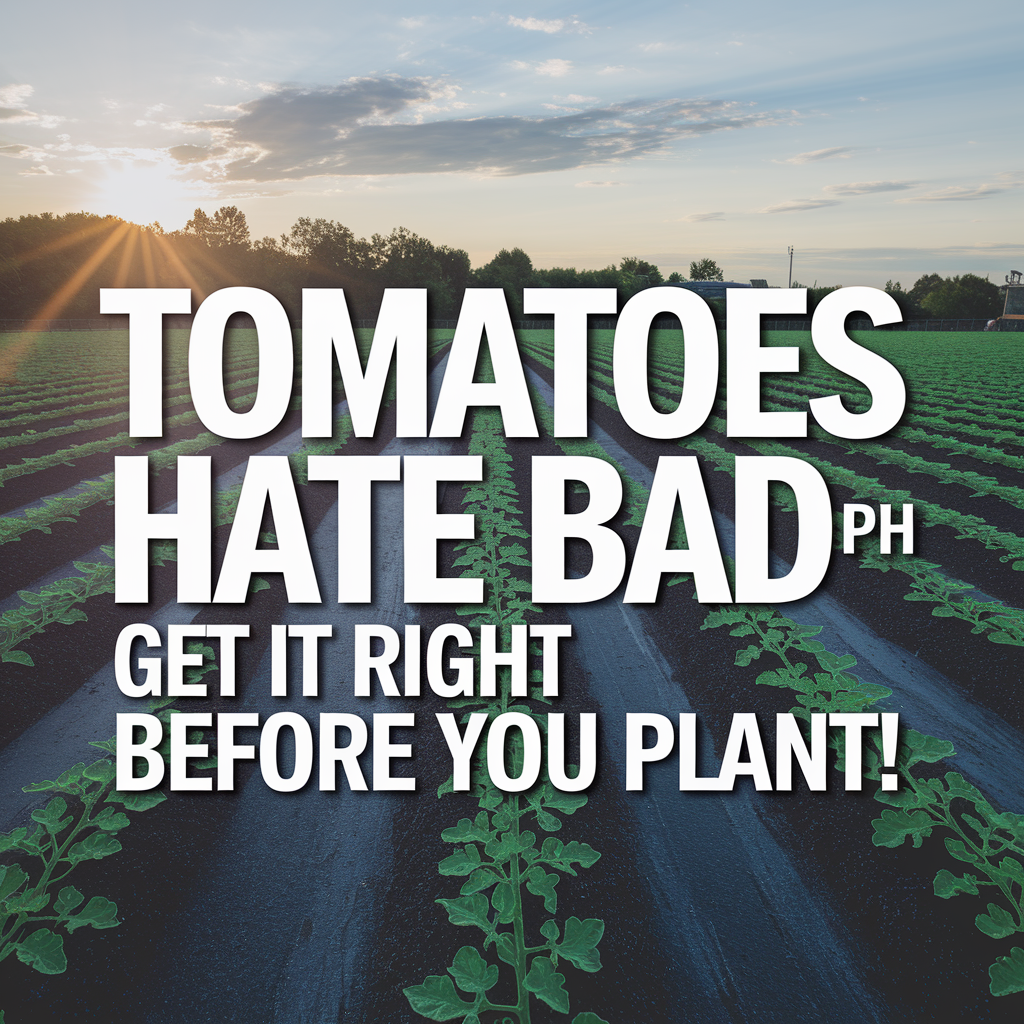
What’s the Best pH for Tomatoes?
Tomatoes thrive in slightly acidic soil, with a pH range between 6.0 and 6.8. This range allows your plants to easily take up critical nutrients like nitrogen, phosphorus, potassium, calcium, and magnesium. If your pH drops too low (acidic) or climbs too high (alkaline), your tomatoes will start showing signs like curled leaves, blossom end rot, or stalled growth.
The tricky part? You won’t see your pH is off until it’s already causing damage. That’s why testing is so important before planting and throughout the growing season. If you’ve never tested your soil before, now’s the time — and we’ll walk through how to do that next.
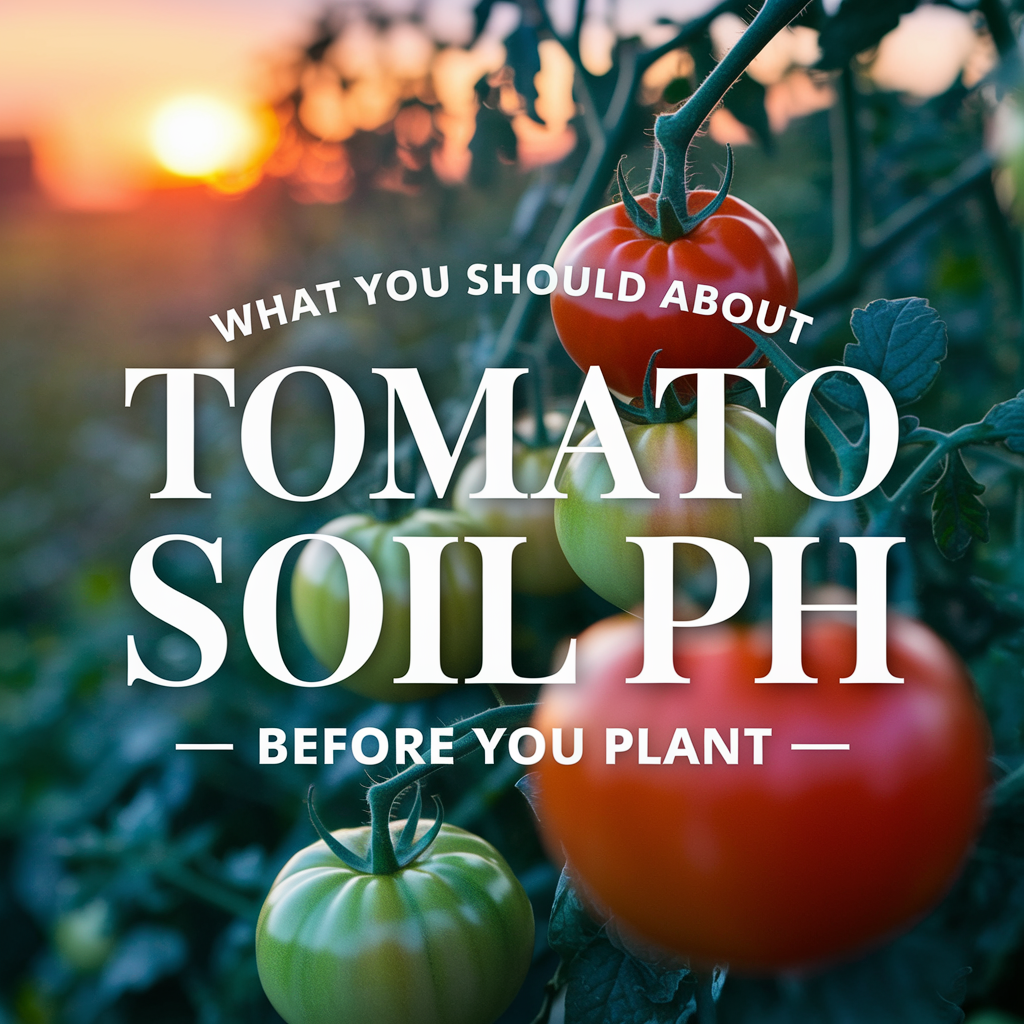
How I Test and Monitor pH in My Tomato Beds
After I learned the hard way, I made soil testing part of my routine — especially at the start of the season. I personally use this 4-in-1 soil meter for tomato plants. It’s quick and gives me instant feedback on not just pH, but also moisture, sunlight, and temperature. It’s saved me from a lot of unnecessary guesswork.
If I need to check my nitrogen levels and do a deeper pH check, I grab the Soil pH and Nitrogen Test Kit. It’s simple enough to use in the backyard, and I trust it before planting my seedlings.
These tools are essential for knowing when (and how) to adjust your soil pH. And trust me, a $10 test kit is way cheaper than replanting dead tomatoes.
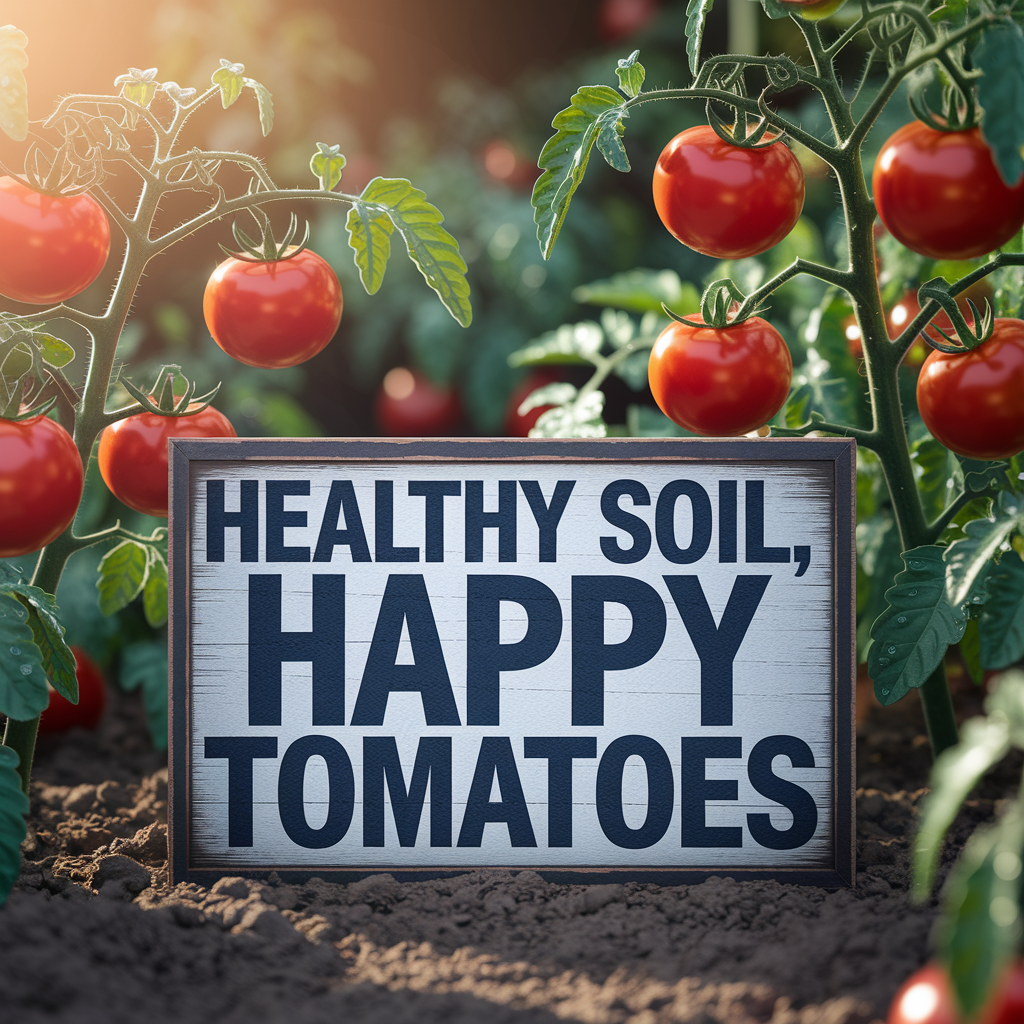
How to Raise Soil pH for Tomatoes
If your soil is too acidic (pH under 6.0), your tomato plants won’t be able to take in calcium and magnesium efficiently — which leads to things like blossom end rot. Been there, done that.
To raise your soil’s pH, I recommend using Fast Acting Lime. It works pretty quickly compared to traditional lime products, and it’s especially helpful if you’re growing in clay-heavy or sandy soil that tends to get too acidic.
Here’s what I do:
- Test my soil first.
- Apply lime according to the instructions (don’t eyeball it — pH is sensitive).
- Water the area to help it activate and recheck in a week or two.
And always add lime a few weeks before transplanting tomatoes so it has time to adjust the soil pH naturally.

How to Lower Soil pH for Tomatoes
Now, if your soil is too alkaline (above 7.0), your tomatoes might struggle to absorb key nutrients like phosphorus and iron — and you’ll probably start seeing yellowing leaves and stunted growth.
To bring your pH down, I’ve had solid success using Fast Acting Sulfur. It’s simple to spread, and it starts working faster than the old-school sulfur granules I used to mess with.
Here’s how I lower my soil’s pH:
- I test first (don’t skip this step).
- Then I apply sulfur based on how much of a drop I need — too much too fast can shock your plants.
- I water the area and give it a few weeks to settle before planting.
If you’re in a spot with hard water or naturally alkaline soil, this step might become part of your yearly prep.

How I Keep My Tomato Soil Balanced Long-Term
Maintaining good soil pH isn’t a one-and-done kind of deal. Between rain, fertilizers, compost, and watering habits — pH can shift without you realizing it.
So here’s what I do each season:
- Test early and test often. Spring and mid-season are a must.
- Keep my tools handy. I use my 4-in-1 soil meter regularly.
- Use compost that’s pH neutral or slightly acidic. Not all compost is created equal — some can push pH up or down.
And anytime my tomato leaves start looking weird — pale, curled, or blotchy — I always check my soil before changing anything else. Most problems I’ve had could be traced back to either poor drainage or a pH swing.
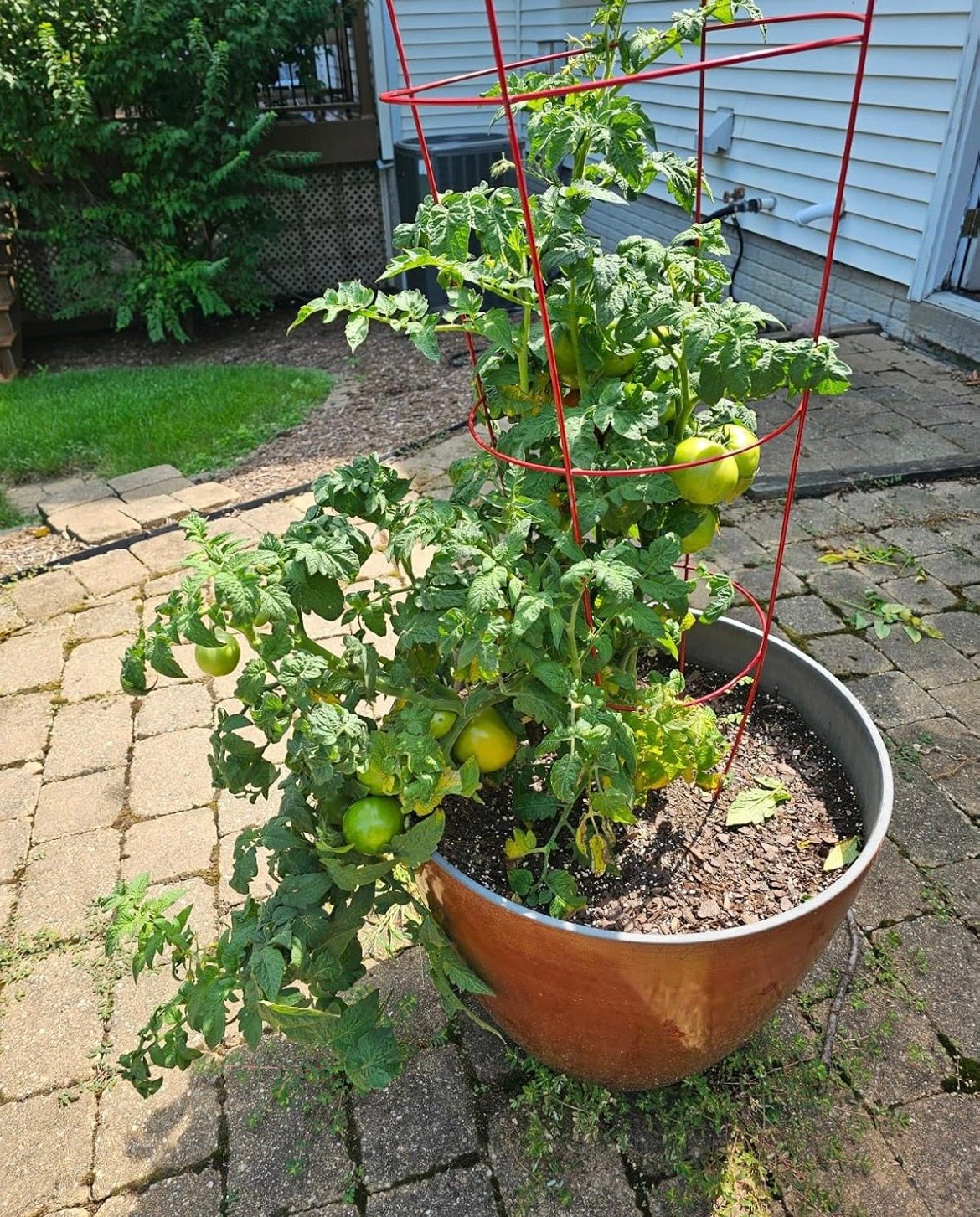
Common Mistakes When Adjusting pH for Tomato Plants
When I first started tweaking soil pH, I made a bunch of rookie mistakes. I dumped too much lime one year, then overcorrected with sulfur the next — and my tomato plants hated me for it.
Here are a few mistakes I’ve learned to avoid:
- Guessing without testing. Always test before applying anything. Both overwatering and poor drainage can looklike a pH issue.
- Changing pH too quickly. Fast changes stress the plants. It’s better to adjust slowly and consistently.
- Ignoring soil texture. Sandy soil reacts differently than clay. What works in one garden might be totally wrong in another.
If you’re serious about dialing it in, grab something like this Soil pH & Nitrogen Test Kit — it’s cheap insurance against wasting a growing season.

Why pH Matters More Than Most Gardeners Think
It’s wild how many tomato growers focus on watering, sun, and fertilizer — but skip the pH entirely. I used to do that too. But pH literally controls how your plants absorb nutrients. You could be adding the perfect fertilizer and still get weak, yellow plants just because your soil pH is out of whack.
Here’s the reality:
- A pH between 6.0 and 6.8 is ideal for tomatoes.
- Below 6.0 and calcium uptake can tank (hello, blossom end rot).
- Above 7.0 and iron becomes less available (say hi to yellow leaves).
Once I understood this, my tomato success rate skyrocketed. Now every season starts with a test — and a few adjustments using pH tools and boosters before I ever drop a seed in the ground.
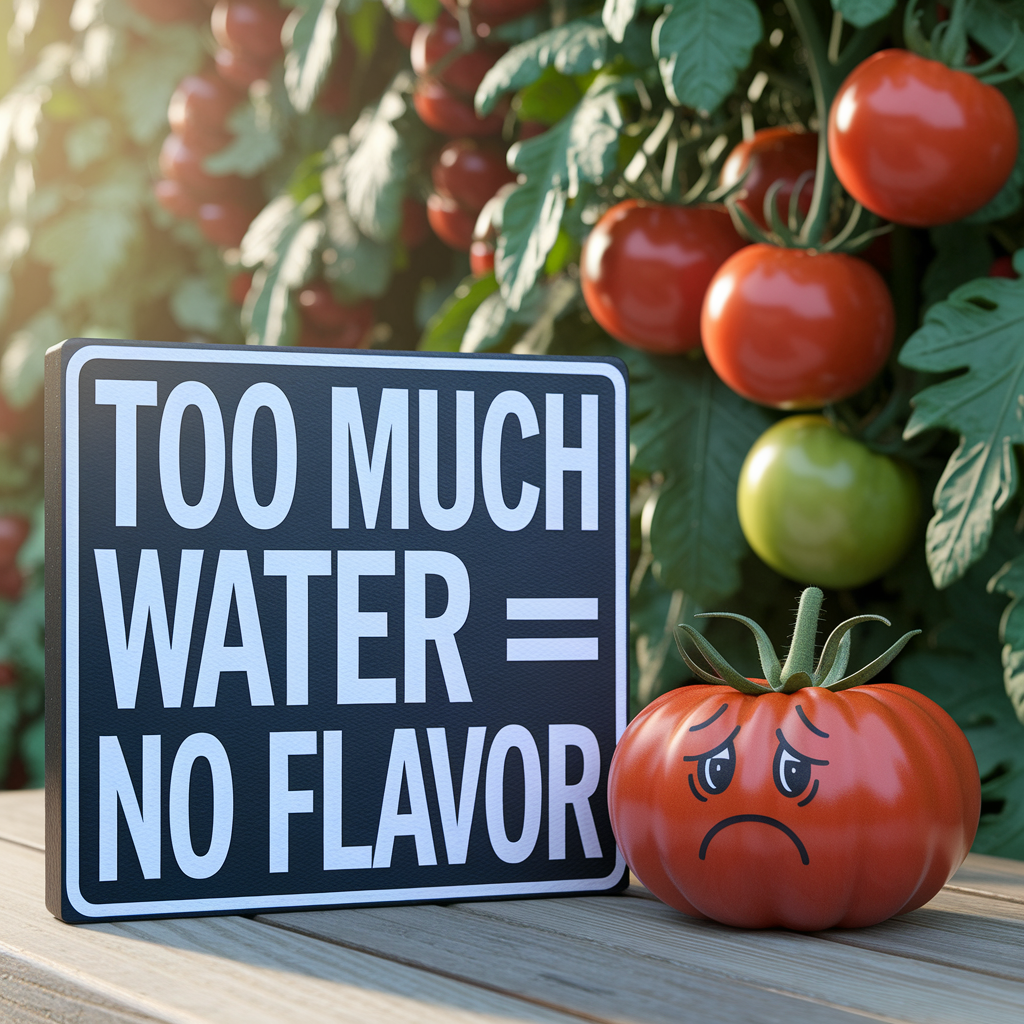
Organic Ways to Adjust Soil pH for Tomato Plants
If you’re like me and prefer to keep things as natural as possible in the garden, there are actually some simple, organic ways to tweak soil pH — no harsh chemicals required.
To raise pH naturally, I’ve had success with:
- Wood ash – It works fast but go easy. A little goes a long way.
- Crushed eggshells – Takes longer, but great for long-term calcium and slow pH rise.
- Garden lime – Still natural and a more controlled option. I like this one: Fast-Acting Lime
To lower pH, I go with:
- Composted pine needles or peat moss – They gradually make the soil more acidic.
- Elemental sulfur – Still organic and really effective, especially this Fast-Acting Sulfur I’ve used with good results.
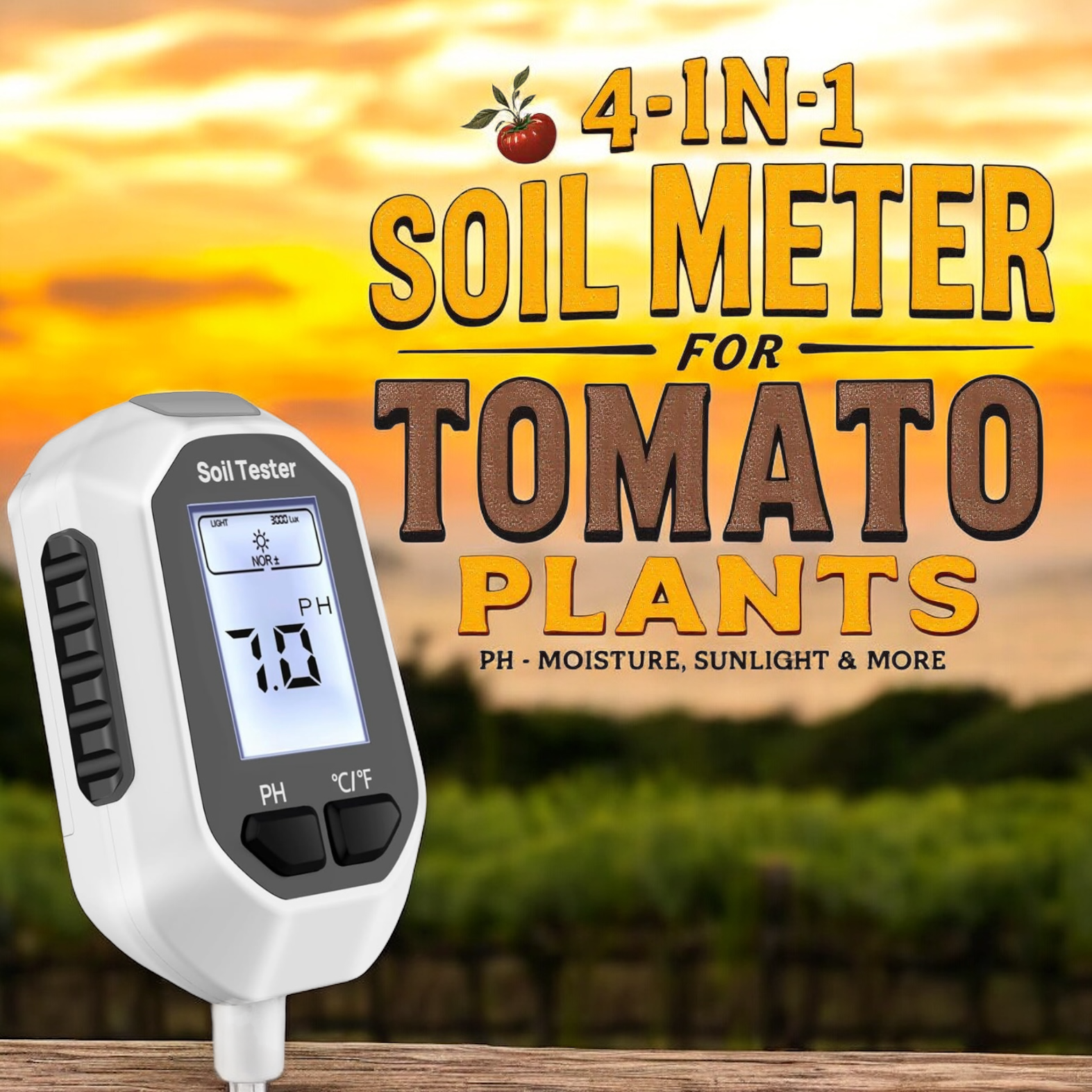
How Long Does It Take to Adjust Soil pH?
This is one of those things I wish I had known earlier — changing soil pH is not like flipping a switch. It can take weeks or even months depending on your soil type, weather, and what you’re using to adjust it.
In my clay-heavy garden, it took almost two months for sulfur to bring the pH down by 1 point. On the flip side, lime worked surprisingly fast — within a couple weeks I noticed better growth and leaf color.
That’s why I always recommend starting early. Test, apply, wait a few weeks, and test again. I like using a 4-in-1 Soil Meter throughout the season so I can monitor pH, sunlight, and moisture all at once. It’s way easier than guessing.

Common Mistakes When Adjusting Soil pH for Tomatoes
I’ve learned a few things the hard way when trying to fix my soil’s pH, and these are some of the most common (and totally avoidable) mistakes gardeners make:
- Adding too much too fast – Whether you’re using lime or sulfur, dumping a large amount in one go can shock your soil and harm your plants. I always go with smaller doses and recheck with my soil pH test kit after a week or two.
- Not checking soil type first – Sandy soil changes fast, but clay takes time. I made the mistake of treating all my garden beds the same and ended up with tomatoes thriving in one patch and struggling in another.
- Ignoring drainage and compaction – If your soil doesn’t drain well or is too compacted, pH amendments won’t move through properly. Loosening the soil and adding organic matter helps everything work better, including your pH fixes.
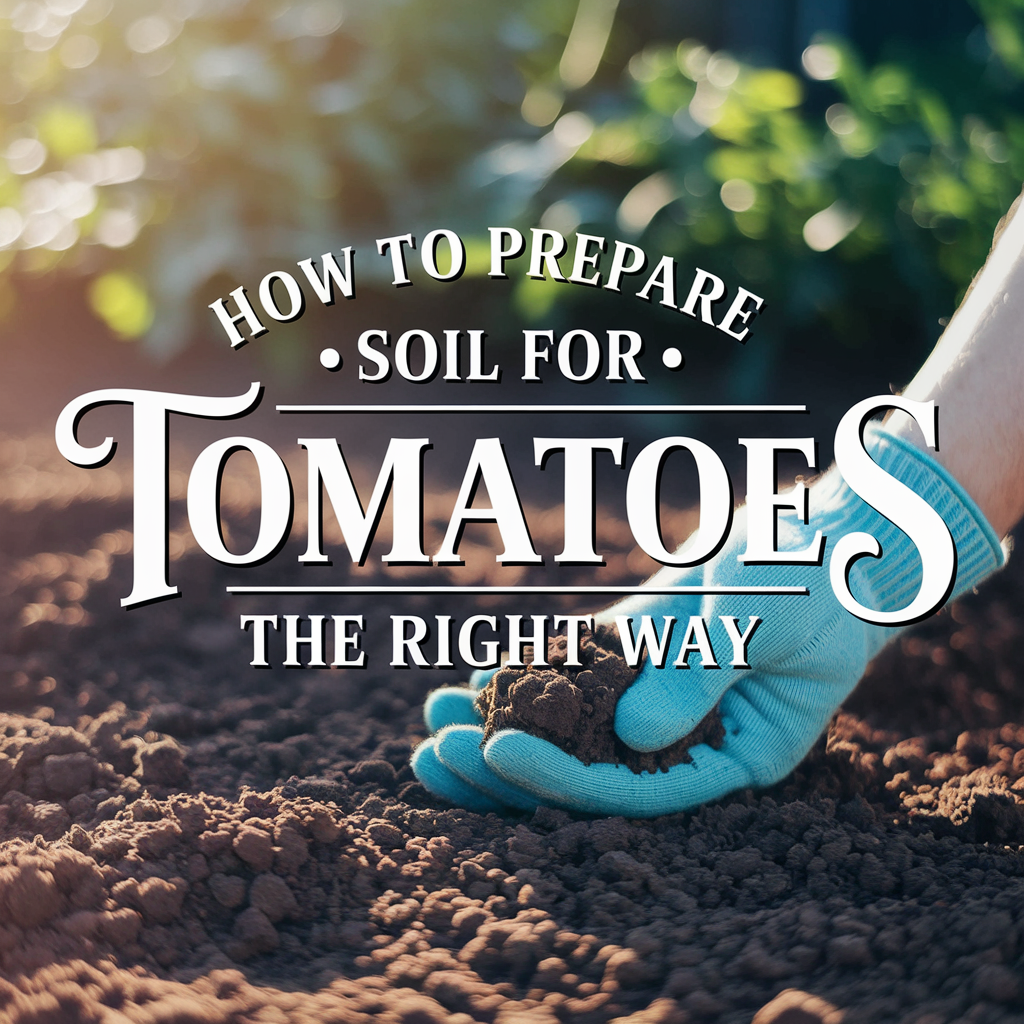
How Often Should You Test Your Tomato Soil pH?
I used to think once a season was enough—turns out, it’s not. Tomato plants are sensitive, especially when it comes to pH, and a lot can change with just a little watering, rainfall, or fertilizer use.
Here’s what I do now:
- Before planting – Always test.
- Mid-season – I check again, especially if I notice yellowing leaves, stunted growth, or blossom end rot.
- After adding any pH-altering product – I retest within a couple of weeks using my go-to 4-in-1 Soil Meter. It’s a game changer.
And if you’re still unsure what your tomato plant’s leaves are telling you, it’s worth checking out this guide on yellowing leaves — it might not be pH at all.

Can You Fix Tomato Soil pH Mid-Growing Season?
Yes—you absolutely can. I’ve done it several times when I noticed my plants weren’t thriving the way they should. But you’ve got to be smart and gentle with the process.
If the soil is too acidic, I’ll mix in a little fast-acting lime like this Earth Science Fast Acting Lime. For soil that’s too alkaline, I go with something like Earth Science Fast Acting Sulfur. I just apply a small amount around the plant base, water it in, and monitor with my pH tester.
But keep in mind: you’re not going to fix the pH overnight. This is a slow adjustment game.

The Sweet Spot: pH Range Tomatoes Actually Like
Tomatoes are a bit picky. They like their soil to be just right—typically in the 6.0 to 6.8 range. If your soil falls outside of that window, you’ll likely run into problems like nutrient lockout or poor fruit development.
I once tried to push tomatoes in soil with a pH over 7.2… they barely produced anything. But after adjusting it back down into the sweet spot? Night and day difference.
I always tell new growers—grab a tester and dial it in early. And if you need help prepping your soil the right way from the start, I broke that all down in this guide on preparing tomato soil. It’s one of the most overlooked steps in tomato growing success.

How to Naturally Balance Tomato Soil pH Over Time
If you’re not into using concentrated products right away, you can still adjust your tomato soil pH more naturally—and I’ve done this in my own backyard garden when I had more time and wanted to keep things organic.
To lower soil pH naturally, composted pine needles, elemental sulfur, or even peat moss can help gradually acidify alkaline soil. On the flip side, to raise low pH, adding crushed eggshells or wood ash works slowly but surely. Just sprinkle them into the soil and keep testing every couple weeks.
And remember—consistent composting always helps stabilize soil health, so don’t underestimate the power of adding compost to your garden bed year after year. It won’t change pH dramatically overnight, but it will give your tomato roots a better environment overall.

Why pH Testing Should Be Routine for Every Tomato Grower
I used to think soil testing was something only big farms did. But after wasting a season guessing why my tomato plants were struggling, I picked up a 4-in-1 soil meter—and I’ve never looked back.
Now I test before planting, mid-season, and especially after adding any amendments. It gives me confidence that my plants are getting the conditions they need. Without testing, you’re really just gardening blind.
Don’t let your tomatoes fail just because of something as fixable as pH. Whether you’re starting fresh or adjusting mid-season, there’s a clear path forward.

My Final Thoughts on Adjusting Tomato Soil pH the Right Way
Learning how to change soil pH for tomato plants completely changed the game for me. I used to plant tomatoes, cross my fingers, and hope they’d thrive. Now? I check my soil first, use tools like the pH and nitrogen test kit or my go-to 4-in-1 soil meter, and actually know what I’m working with.
If your pH is too low, products like this Fast Acting Lime can boost it quickly. Too high? This Fast Acting Sulfur brings it down fast. And if you’re new to all this, check out our guide on what you should know about tomato soil pH before you plant. It breaks everything down step-by-step.
The bottom line? Dialing in your soil pH gives your tomato plants the best shot at a big, juicy harvest. And once you’ve got it figured out, you’ll wonder why you didn’t do it sooner.
As an Amazon Associate we earn from qualifying purchases through some links in our articles.
